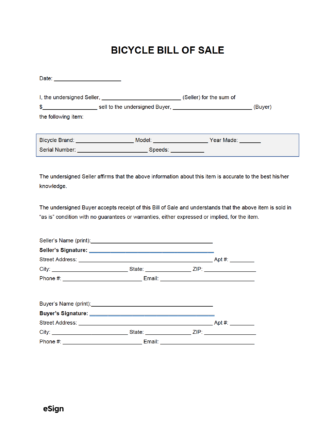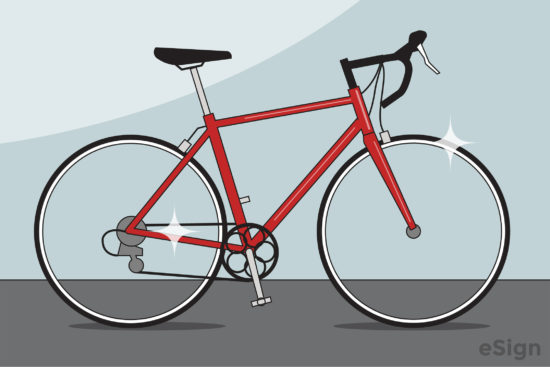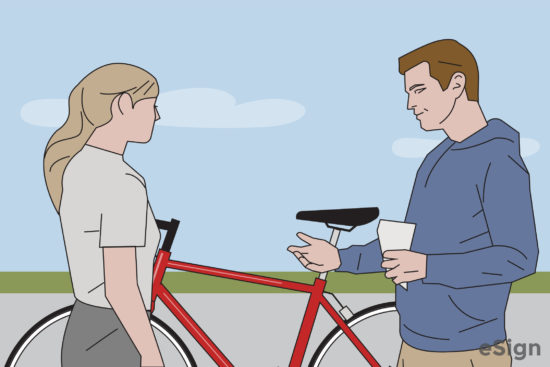Selling a Bicycle
Step 1 – Inspect the Bike

A seller will want to first examine the bike, looking for obvious wear and tear or broken parts. Repairing a damaged bike can improve its selling price.
If the bicycle is heavily damaged, selling it for a discounted price in “as-is” condition may be the best option.
Step 2 – Research Prices
The bicycle’s price should be set at a reasonable amount relative to what used bikes sell for in the owner’s area. If the bike is new, it can be priced closer to the original amount paid.
Step 3 – List it Online
The owner will need at least one good photo of the bike for their listing. It’s recommended to wash the bike before taking pictures.
Once ready, the owner can post advertisements for their bike on social media and online listing services.
Alternative: Brick-and-Mortar Shop
As an alternative to listing their bike online, the owner can sell it to a local pawn shop or used sporting equipment store. This option usually results in a lower selling price than direct selling because the shop will need to make a profit on the re-sale.
Step 4 – Complete the Transaction
When a potential buyer contacts the seller, a time and place must be arranged to examine the bike in person and complete the transaction. The seller can prepare a bill of sale to be completed and signed after the buyer pays them.
The buyer should be given the completed bill of sale and any documentation on the bike.
Sample
Download: PDF, Word (.docx), OpenDocument
BICYCLE BILL OF SALE
For goods and other consideration and in payment of the sum of $[AMOUNT], [SELLER NAME] of [ADDRESS] hereby sells and transfers to [BUYER NAME] of [ADDRESS] the following item:
Bicycle Brand: [BRAND] Make: [MAKE] Model: [MODEL] Year Made: [YEAR]
Serial No. [SERIAL NUMBER] Speeds: [SPEED]
The undersigned Seller affirms that the above information about this item is accurate to the best his/her knowledge.
The undersigned Buyer accepts receipt of this Bill of Sale and understands that the above item is sold in “as is” condition with no guarantees or warranties, either expressed or implied, for the item.
Seller Signature: _______________________ Date: [MM/DD/YYYY]
Printed Name: [SELLER NAME]
Buyer Signature: _______________________ Date: [MM/DD/YYYY]
Printed Name: [BUYER NAME]




